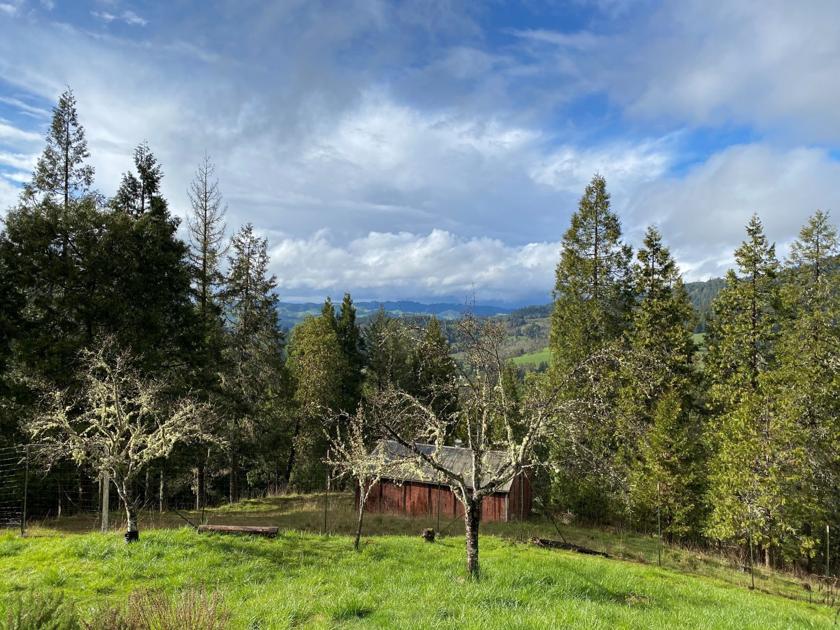
The 2020 Labor Day wildfires across the state spurred a call to action for all Oregonians to take on the responsibility of preparing their homes, neighborhoods and communities for wildfire.
Our local community has been diligently working on projects such as thinning trees, clearing dense understory brush, pruning trees that touch houses/outbuildings, landscaping with fire-resistant plants and improving road/driveway access/signage for emergency personnel.
While these are important and impactful steps, you may be left wondering how to balance the need for fire preparedness with other home and land management objectives, such as maintaining visual aesthetics or supporting/providing wildlife habitat. These two objectives can be compatible with fuel hazard reduction, but some compromises may need to be made.
Wildlife utilize herbaceous grasses and forbs, shrubs, logs, trees and snags for food, cover and nesting. Several species of birds utilize shrubs for nesting and cover, yet many native shrubs are also fire-prone (manzanita, bitterbrush, sagebrush, etc.). The key is to reduce the fuel ladders and fuel continuity enough to reduce the risk, but still keep some untreated cover areas (in between) for wildlife habitat.
You must decide how much risk you are willing to accept and balance accordingly.
In this next section, we will refer to fuels reduction zones 1-3. Think of these as concentric circles around your house. Zone 1 extends from the house itself out to 30 feet. Zone 2 extends from 30 feet out to 100 feet (or more on steeper slopes). And Zone 3 is the area beyond Zone 2 that extends out to the property line.
How you landscape and maintain the vegetation in these zones will have a big influence on the survival of your home in a wildfire.
- Zone 1 (0-30 feet): This zone should have the highest priority for fuel reduction and creating defensible space. In this zone, you can provide or create food and water sources for wildlife. Wildlife considerations may include use of fire-resistant plants as food sources and providing water features.
- Zone 2 (30-100 feet): Leave a limited amount of shrub cover in patches but avoid leaving patches under trees as you don’t want to create ladder fuels. A few downed logs can be left, but there shouldn’t be any snags in this zone. Plant or retain hardwoods that provide food sources, like oak, cherry and others that are also fire resistant. Leave deciduous shrubs for food and cover that have a higher moisture content, such as oceanspray.
- Zone 3 (100+ feet): Leave some shrub patches and downed logs. Snags also may be left, but be aware that if they ignite, they could create a hazard by spewing embers across your property. If you own several to tens of acres or more, you can leave a few snags per acre without greatly increasing the fire risk.
If you are interested in steps you can take to prepare for wildfire, visit the OSU Extension Fire Program page at beav.es/3h2. OSU Extension brought together a team of fire experts to offer a suite of resources for all Oregon homeowners and landowners, including a 7-part recorded webinar series covering fire awareness and preparedness at three levels:
- Individual: What you can do now to get yourself, your family, and your home ready.
- Community: How you can be a part of promoting a wildfire safe community.
- Landscape: How you can live and thrive in a fire-adapted environment.
You can prepare your home and property for wildfire year-round while still meeting your varied land management objectives. If you have questions about how to find a balance with these tasks, please reach out to the Douglas County Extension office at 541-672-4461.
Additional resources:
Wildlife-Friendly Fuels Reduction in Dry Forests of the Pacific Northwest. Woodland Fish and Wildlife Group: beav.es/3h8
- Keeping Your Home and Property Safe from Wildfire: A Defensible Space and Fuel Reduction Guide for Homeowners and Landowners:
"fuel" - Google News
June 21, 2021 at 12:06AM
https://ift.tt/2SHurk6
Balancing fuel reduction with wildlife habitat | Home And Garden | nrtoday.com - NRToday.com
"fuel" - Google News
https://ift.tt/2WjmVcZ
Bagikan Berita Ini
















0 Response to "Balancing fuel reduction with wildlife habitat | Home And Garden | nrtoday.com - NRToday.com"
Post a Comment